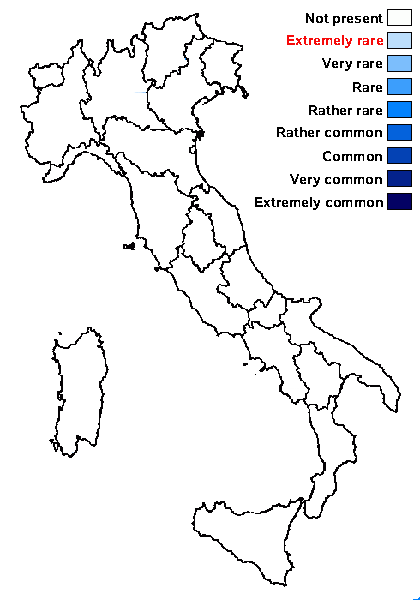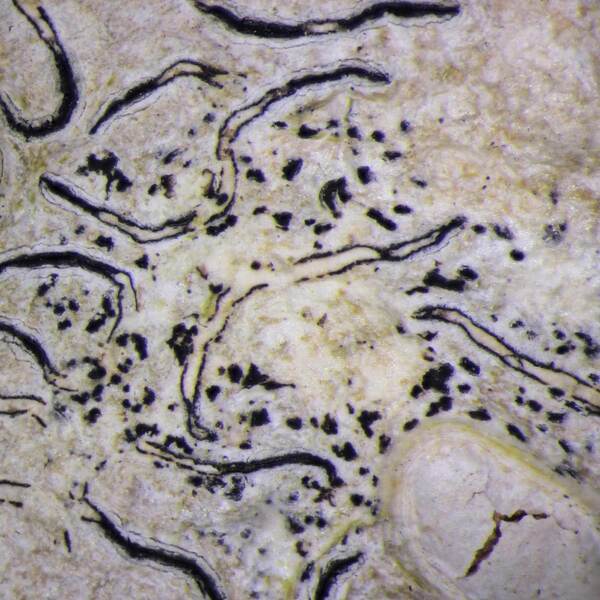Arthonia graphidicola Coppins
Lichenologist 21: 213, 1989.
Synonyms:
Distribution:
Description: Thallus inapparent, not lichenized, developing inside the thalli of Graphis-species, sometimes staining the host thallus pink. Apothecia arthonioid, red-brown to brown-black, epruinose, at first immersed in the host thallus but soon erumpent, rounded or angular and 60-160 μm in diam., or elongate and to c. 420 x 60-100 μm, 60-85 μm tall, without a distinct proper margin. Proper exciple poorly developed; epithecium indistinct or pale red-brown, K+ olive-green; hymenium pale red-brown, 40-50 μm high, K+ pale olive-green, I+ wine-red; paraphysoids branched mainly in upper part, 1-1.5(-2) μm thick, the apical cells up to 3.5 μm wide, rarely with a dark cap; hypothecium colourless, 10-30 μm high, I+ blue. Asci 8-spored, clavate, semi-fissitunicate, with a large apical dome and a distinct ocular chamber, Arthonia-type. Ascospores, 2-3-septate, the apical cells enlarged, cylindrical-obovoid, at first hyaline and smooth, later brown and warted, (13-)14-17 x 4.5-5.5 μm, often surrounded by a thin perispore when young. Pycnidia rare, immersed, the wall red-brown, K+ pale green. Conidia bacilliform, 4.5-5 x c. 0.8 μm. Photobiont absent. Spot tests: K-, C-, KC-, P-. Chemistry: without lichen substances. Note: a lichenicolous fungus growing on the thalli of Graphis-species, known from several European countries; to be looked for in Italy.
Growth form: Lichenicolous fungus
Substrata: bark
Reproductive strategy: mainly sexual
paras Graphis-species

Predictive model
Growth form: Lichenicolous fungus
Substrata: bark
Reproductive strategy: mainly sexual
paras Graphis-species

Predictive model
 INDEX FUNGORUM
INDEX FUNGORUM
 GBIF
GBIF




